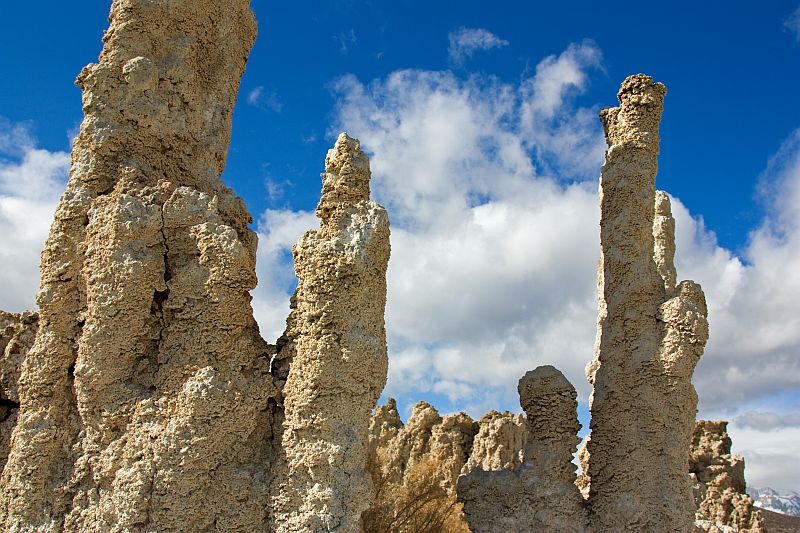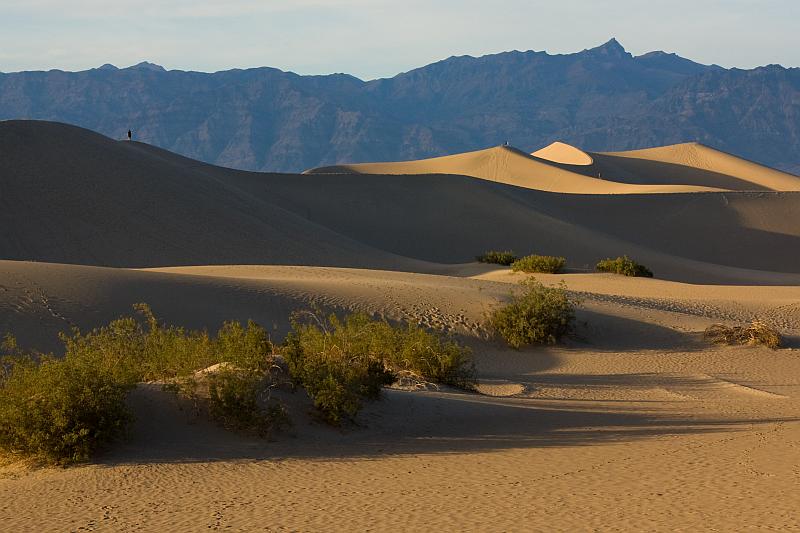My monthlong trip to Hawaii and California is over. I saw lots of beautiful places, covered thousands of miles and took many photos which I am eager to share with you. This post serves as an introduction to my twelve days in California.
There is little doubt that it was the best geotrip I’ve had so far. I saw many classic examples of geology which are usually shown in geology textbooks like pahoehoe from Hawaii, debris flow fans in Death Valley, and tufa towers of Mono Lake to name just a few. I saw everything I wanted to see in Hawaii (erupting volcano, green sand beach, mantle xenoliths, etc.) and in California I actually saw more than I planned. I did not believe when planning the trip that I have time to take a look at the largest trees in the world in Sequoia NP and see the beautiful landscape of Yosemite but I managed to press these into my plans as well. It is needless to say that twelve days is not enough to get to know California and its geology well but I got a taste of it and really liked it very much. So much that I definitely plan to return in the future. I will return to USA already within this year but it will be a different trip to a different place. I will write about that later when the time is right.
http://picasaweb.google.com/107509377372007544953/California02#5867496428932872882
Red Rock Canyon State Park was my first destination. It was conveniently on the road from LA to the Owens Valley and well worth a visit. It has many nice outcrops of sandstone and mudstone.
http://picasaweb.google.com/107509377372007544953/California02#5867496534395740962
It was very variable trip and not only geologically. I experienced freezing cold high in Sierra Nevada, dry heat in Death Valley and strong winds in many places. This particular morning and especially the preceding night near Obsidian Dome were quite cold. It is no wonder because this place is about 2,500 meters above sea level. I discovered that night that my old sleeping bag is no longer an adequate protection from temperatures like that. I believe it was -10 °C and I couldn’t sleep after about midnight because of cold. So I was up as soon as it was light enough. This photo was taken during the early morning hours. You can see a nice boulder of obsidian with gray pumice. Road to this place was still blocked with snow. So I had to take a 6 km hike but did so happily because it was a great way to get some warmth.

http://picasaweb.google.com/107509377372007544953/California02#5867496987590425842
American roads tend to be often straight and usually surprisingly wide. This is not something I am used to see because roads in Europe are much more winding and generally narrower also. This road descends to Death Valley from northern direction. I visited Eureka Dunes before and was on the way to see the rest of the valley.
http://picasaweb.google.com/107509377372007544953/California02#5867496986905606818
This place is near Racetrack Playa with its sliding rocks. I believe that the name “Teakettle Junction” is older and the tradition to hang teakettles there came later but who knows. Nice tradition anyway.

http://picasaweb.google.com/107509377372007544953/California02#5867497010590580706
Oh, these American roads. They can be a lot of fun. I can understand now why so many Americans prefer to drive 4×4 vehicles. It is a necessity in many cases. I am not wealthy enough to afford to rent these. So I have to be careful when choosing which roads to drive with a smaller car. I had no plan to go and see the Lippincott Pass but I did take a trip over the Red Pass in another range which was theoretically driveable with a 2WD car but in reality was only very barely so.
http://picasaweb.google.com/107509377372007544953/California02#5867497008540006930
I don’t know exactly what it symbolizes. Perhaps solitude and desolation because it is in one of the ghost towns. This ghost town is named Rhyolite and it is located in southern Nevada. So in addition to Hawaii and California I also visited Nevada although very briefly. I was drawn into this town partly because of its name (rhyolite is a rock type) and mostly because I just wanted to see how a ghost town in America looks like. I have to say that what I found there was disappointing. Perhaps I had an illusion of something western-like but this town seems to be younger and it has just some ruined houses. Nothing very special except this wooden structure which was the funniest thing I saw in Rhyolite.
http://picasaweb.google.com/107509377372007544953/California02#5867497039413224818
I spent most of my time in California behind the mountain ranges which makes climate very dry there. But during the last days of my trip I also saw much more populous areas of California which have more human-friendly climate. On this picture is an orange tree growing in Central Valley near the Sierra Nevada mountain range. To me it is strange to see a tree with blossoms which also carries ripe fruits. Maybe someone can explain this to me.
http://picasaweb.google.com/107509377372007544953/California02#5867497044249579026
Nice to see that some old cars are still moving. I would not choose this one as my four-wheeled companion on a geotrip but it is a delight to see those on the road.
http://picasaweb.google.com/107509377372007544953/California02#5867497049453877778
Sierra Nevada is mostly composed of granitoid igneous batholiths. This one is probably granodiorite and it hosts a nice inclusion of diorite (10 cm in length). Such inclusions are really abundant. I found them in many places and on both sides of the range.

Actually Rhyolite,NV is among the younger western ghost towns dating from discoveries in 1905. Just for your reference Virgina City,NV and the Comstock was in 1859, Austin and Eurka,NV in the 1860-1865 time frame and so on. There was a second set of booms starting around 1900 in Goldfield Tonapah, and indeed Rhyolite,NV.
If you come back see if you can fit a trip to the Colorado Plateau in, besides the Grand Canyon, Include at least Canyonlands (its a more human scale of 3000 foot deep not 6000 and no granite at the bottom, but the area has a lot of results of salt flowage (see paradox valley etc). It time permits add Capital Reef (Arches is right with Canyonlands), and then Zion and Bryce to see the entire regional strat column from Pre Cambrian to recent lava flows.
Slim – It looks like, from your post, that you had a great trip here. I’m glad you were able to see some great California sights. One thing about California, even if you could see all the truly spectacular sights that are well publicized, you’d still have days and days to see the “merely spectacular.” Road-tripping in this state is always adventurous and fun. I’ve only been doing it since I moved here nearly 25 years ago and I feel like I still have a lifetime of things to see and do. It is a geologist’s paradise. Anyway, I’m looking forward to seeing your photos, and insights from someone new to “the scene.”
I have been to many of the places you have listed in this post, and even have a few rock samples of the exact kind of rock you featured in your last photo. I’m glad you were able to finally see California. I enjoy reading your blog, keep up the good work.
Looks like you had a great trip. I wish I hadn’t been so bogged down in teaching these last few weeks, because you were all around me – I’d have enjoyed the chance to meet up. Next time you get back to California don’t hesitate to get in touch.
Lyle, I will take a look at the older ghost towns when going there in the future. My route followed your previous recommendations quite closely. I visited Convict Lake, Mono Craters, Long Valley Caldera, etc. Thanks for mentioning them.